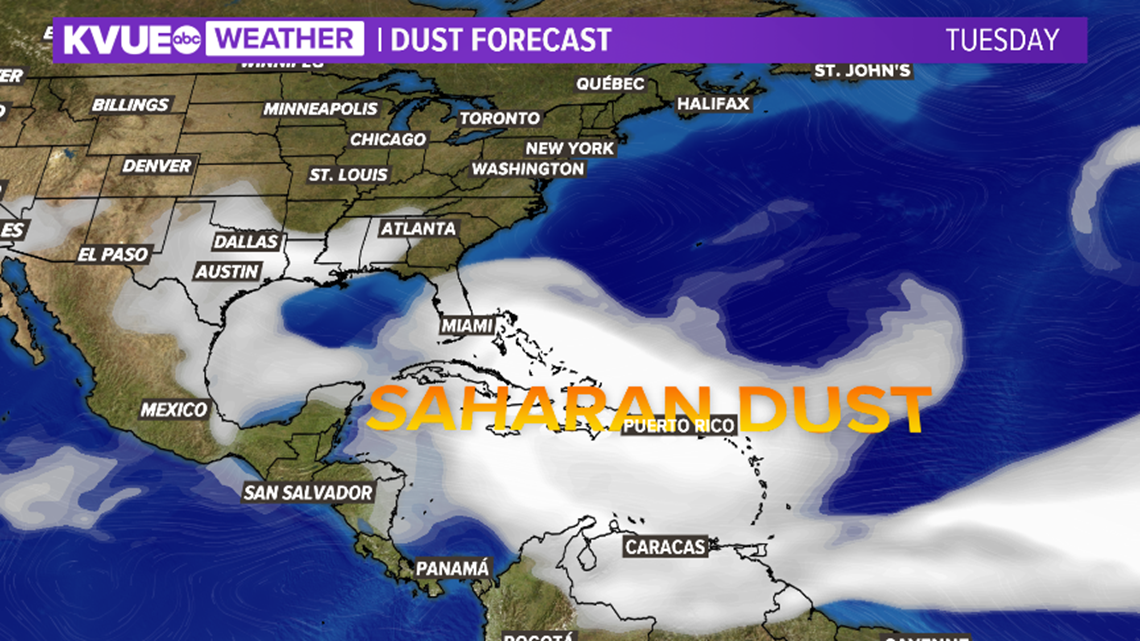AUSTIN, Texas — This time of the year, it's pretty typical that we hear about dust in the atmosphere making its way to the U.S. from the west coast of Africa.
But how does it travel over 4,700 miles to make its way to Central Texas? Let's break it down.
You see, we're already tracking dust moving into Texas off the Gulf of Mexico. Here's how it forms: We have dry conditions in northern Africa. These dust storms start to flare up and then winds – the trade winds – take them across the Atlantic thousands of miles.
Now, there are some benefits from it traveling over the Atlantic. For example, it actually helps to put a lull in tropical activity so we're not tracking as many tropical developments, such as storms, depressions or hurricanes. Tropical systems thrive off of moist air and require convection to form and grow. Saharan air and dust help inhibit those factors.


Notice that once it arrives, though, it does have some local impacts. You have probably noticed hazy conditions in the sky causing "moderate" air quality. So, if you are sensitive or have respiratory complications, make sure you factor that into your upcoming outdoor plans.
But the dust does have some benefits as well, such as enhanced sunrises and sunsets. That's when we have those bright colors from how sunlight interacts with the dust in the atmosphere.
Nutrients for our soil also get carried in the dust that comes all the way from Africa. That dust includes nutrients like phosphorous and iron that actually help soil and marine life.
So, when we talk about dust, it's not all bad.
PEOPLE ARE ALSO READING:

